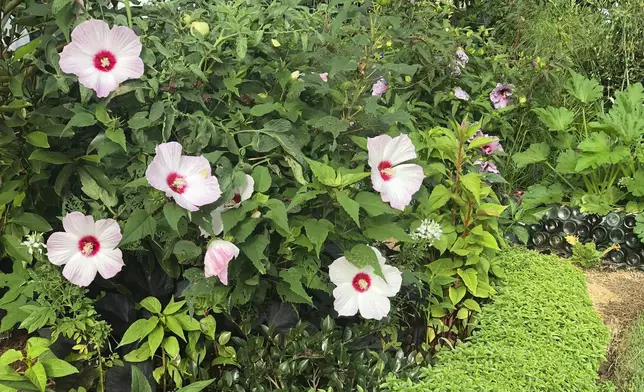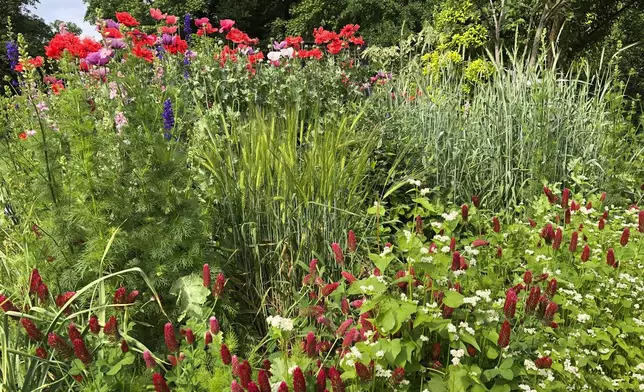I recently started my seeds – tomatoes, cucuzza squash, climbing zucchini, golden beets, Florida cranberries, nasturtiums, zinnias, edelweiss, various herbs and Roma beans. They barely fit on my kitchen counter, which becomes a transient nursery every spring.
Come planting time, they also won’t all fit in my 4-by-4-foot raised beds, grow bags, Earth boxes or around the arbor I installed last year. But rather than curtail my ambitions, I’ll slip sweet potatoes, onions, extra tomatoes and other edibles into my front-yard flower garden.
The practice of combining fruits, vegetables and herbs with ornamental plants — called “foodscaping” — is worth considering even if you’re not short on space, as it can create visual interest in your beds and borders.
— All plants, whether edible or ornamental, should be grouped according to their sunlight, water and fertilizer requirements. Mixing them up is a recipe for disaster. Don’t do it.
— Even if two plants are sun lovers, consider whether either will grow so large that it shades out the other.
— Follow the spacing recommendations on your seed packs or plant tags. They are meant to accommodate the mature size of plants and thwart fungal and mold diseases that result from overcrowding. This will also protect nearby ornamentals.
— Your edibles should be easily accessible for frequent pest- and disease-monitoring, watering and harvesting. Ensure a clear path to avoid trampling perennials and annuals.
Vining sweet potatoes are beautiful plants with lush, heart-shaped leaves. They grow quickly to fill bare spots and can be used as an annual groundcover. And their lovely purple flowers are reminiscent of their morning glory relatives. I’ll be planting mine at the front of a border, but they can also be trained to grow up a trellis.
I’ll plant cherry tomatoes near my roses, where they’ll exude the chemical solanine into the soil to protect the shrubs from the fungus that causes black spot, an often-deadly rose disease. The tomatoes will serve as a visual prelude to the rose hips, which won’t come until later in the season. I strategically selected tomato varieties that are resistant to verticillium and fusarium wilt diseases because roses are also susceptible.
I’ve been growing Alliums (ornamental onions) under my roses for years because they look so pretty together. This year, I’ll add some edible onions and chives to the mix. Aesthetically, they’ll fit right in and hide the bottoms of my leggy rose bushes. As a bonus, they’ll team up with the Alliums to repel degenerate pests like aphids with their aromatic scent.
There are so many other possibilities. You could line a pathway with lettuces or use them as border plants. Lollo Rosa is one of several varieties with eye-catching frilly, red leaves; curled endives, or frisees, have lacy foliage with curly tips. Curly parsley works nicely, too.
Rainbow chards have bold red or yellow stems and interestingly wrinkled leaves with colored veins. Mix them in with ferns, pansies and coral bells.
Rhubarb foliage can add drama to a formal garden when surrounded by low-growing mounded boxwood shrubs.
Underplant pink or orange flowers with purple basil varieties. Amethyst, Dark Opal and the new Prospera Red, which is resistant to downy mildew and fusarium wilt, are three of many options.
Amaranth is an unusual plant with airy red flowers, spinach-like leaves and seeds that can be milled into flour or cooked as a stand-in for quinoa. The plants are annual but tend to reseed, so they typically reappear every year.
Carrots’ lacy foliage complements marigolds and provides a feathery contrast to plants with broad-shaped leaves, such as nasturtiums. They also may improve the health of nearby plants by aerating the soil as their long taproots work their way downward.
Highbush blueberries are beautiful shrubs with dramatic red fall foliage. Some varieties can reach 12 feet tall. It’s also an excellent stand-in for Burning Bush winged euonymus, which has been deemed invasive along the entire East Coast and in Illinois. It’s winter-hardy in horticultural zones 3-8.
Thyme will form a thick groundcover that’s hardy in zones 5-9. Sage will do the same in zones 5-8. Alpine strawberry is a perennial groundcover everywhere in the continental U.S.
Rosemary lends a perennial evergreen vibe to gardens in zones 8 and 9, but certainly can be included elsewhere as an annual.
Corn is a member of the grass family, so why not put it to work in place of ornamental grasses? Plant a row in full sun at the back of a border, or use just one to fill a bare spot in the garden.
Instead of purchasing ornamental kales and cabbages for fall decorations, why not plant garden cabbages and kale? Although the ornamentals are technically edible, they don’t taste as good. Crop varieties, however, can be served with your Thanksgiving feast.
And that’s something to be thankful for.
—-
Jessica Damiano writes regular gardening columns for the AP and publishes the award-winning Weekly Dirt Newsletter. You can sign up here for weekly gardening tips and advice.
For more AP gardening stories, go to https://apnews.com/hub/gardening.
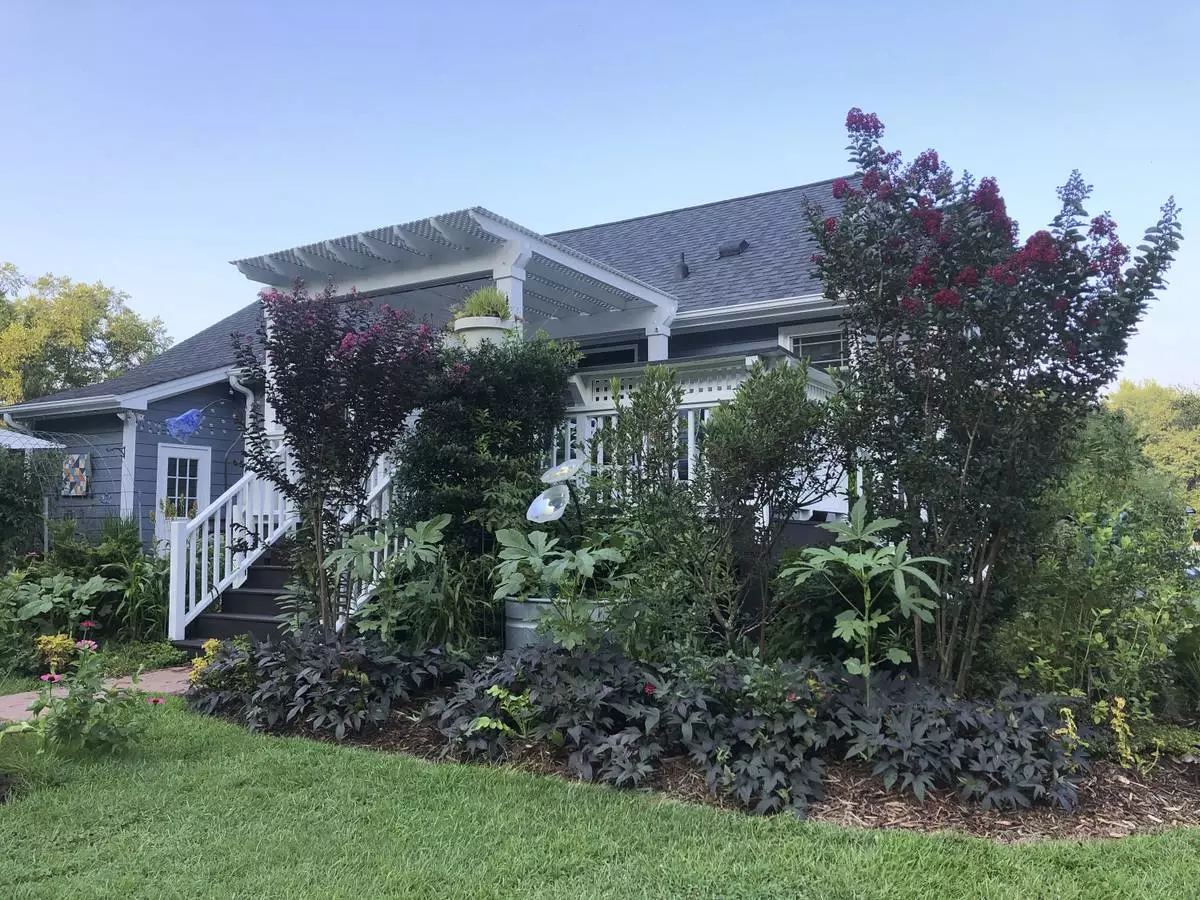
This undated image provided by Brie Arthur shows Treasure Island sweet potatoes and okra adding both edible and ornamental value to a sunny foundation landscape in Fuquay-Varina, North Carolina. (Brie Arthur via AP)

This undated image provided by Brie Arthur shows tomatoes vining up hardy, perennial hibiscus in a border edged with basil in Fuquay-Varina, North Carolina. (Brie Arthur via AP)

This undated image provided by Brie Arthur shows Treasure Island sweet potato plants covering a trellis in a "foodscaped" garden in Fuquay-Varina, North Carolina. (Brie Arthur via AP)
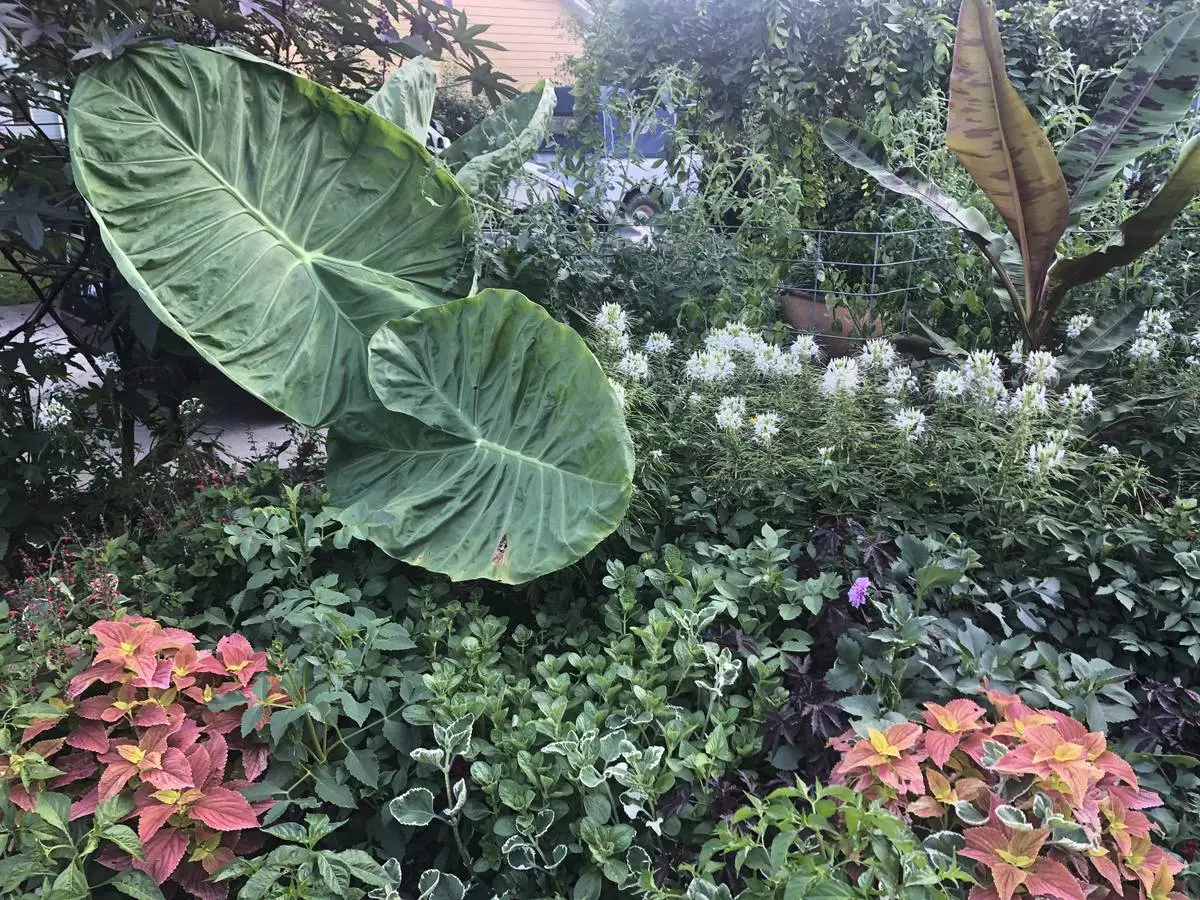
This undated image provided by Brie Arthur shows a "foodscaped" garden in Fuquay-Varina, North Carolina, where tomatoes, peppers, basil and eggplant hide in plain sight among ornamental plants. (Brie Arthur via AP)

This undated image provided by Brie Arthur shows zucchini and a groundcover of peanuts sharing garden space with ornamental plants like coleus, sunflowers and butterfly weed in Fuquay-Varina, North Carolina. (Brie Arthur via AP)
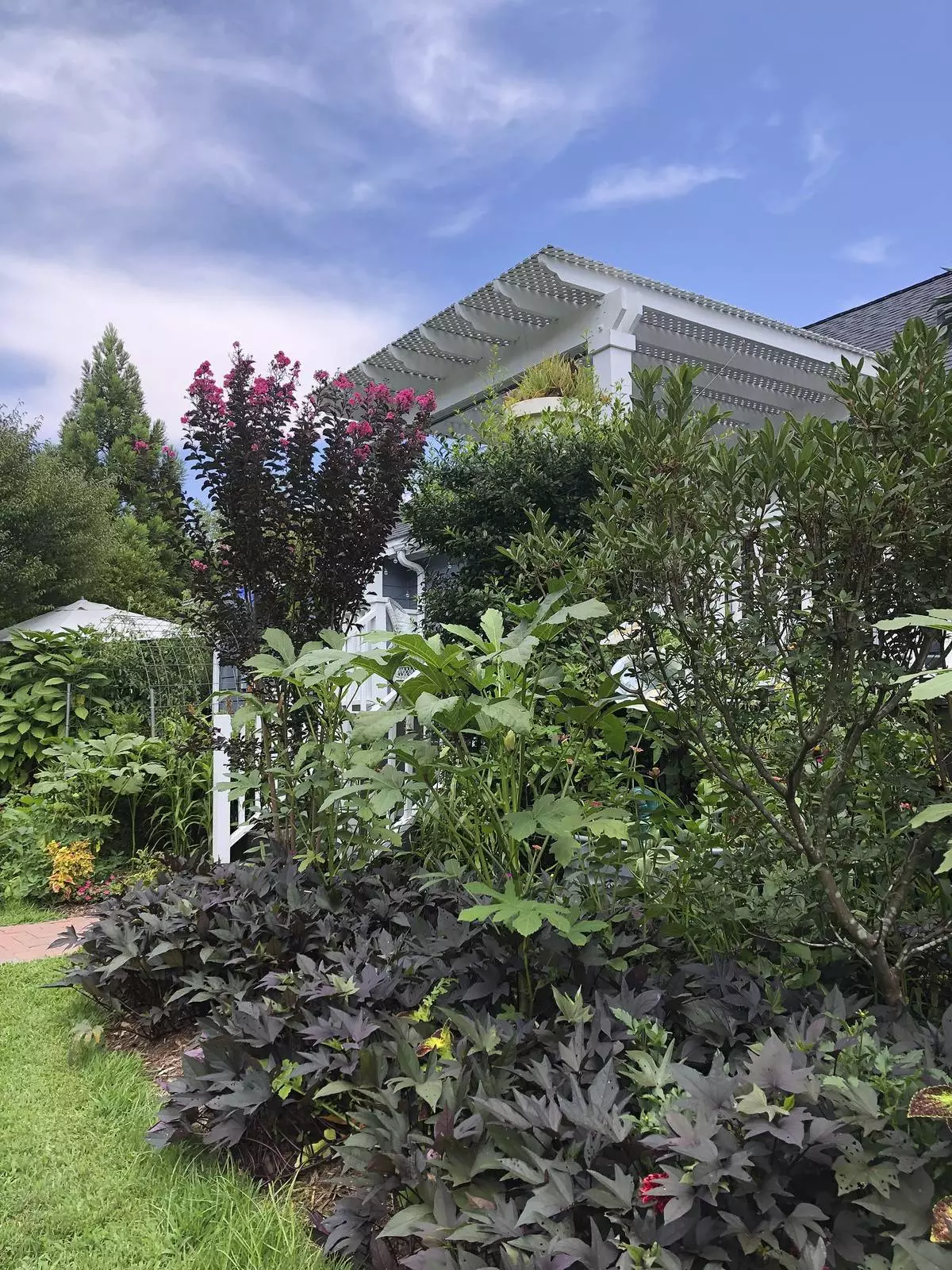
This undated image provided by Brie Arthur shows okra and sweet potatoes growing alongside ornamental plants in Fuquay-Varina, North Carolina. (Brie Arthur via AP)

This undated image provided by Brie Arthur shows a spring cottage garden border in Fuquay-Varina, North Carolina, where a edible barley, wheat and buckwheat grow alongside poppies, larkspur and crimson clover. (Brie Arthur via AP)
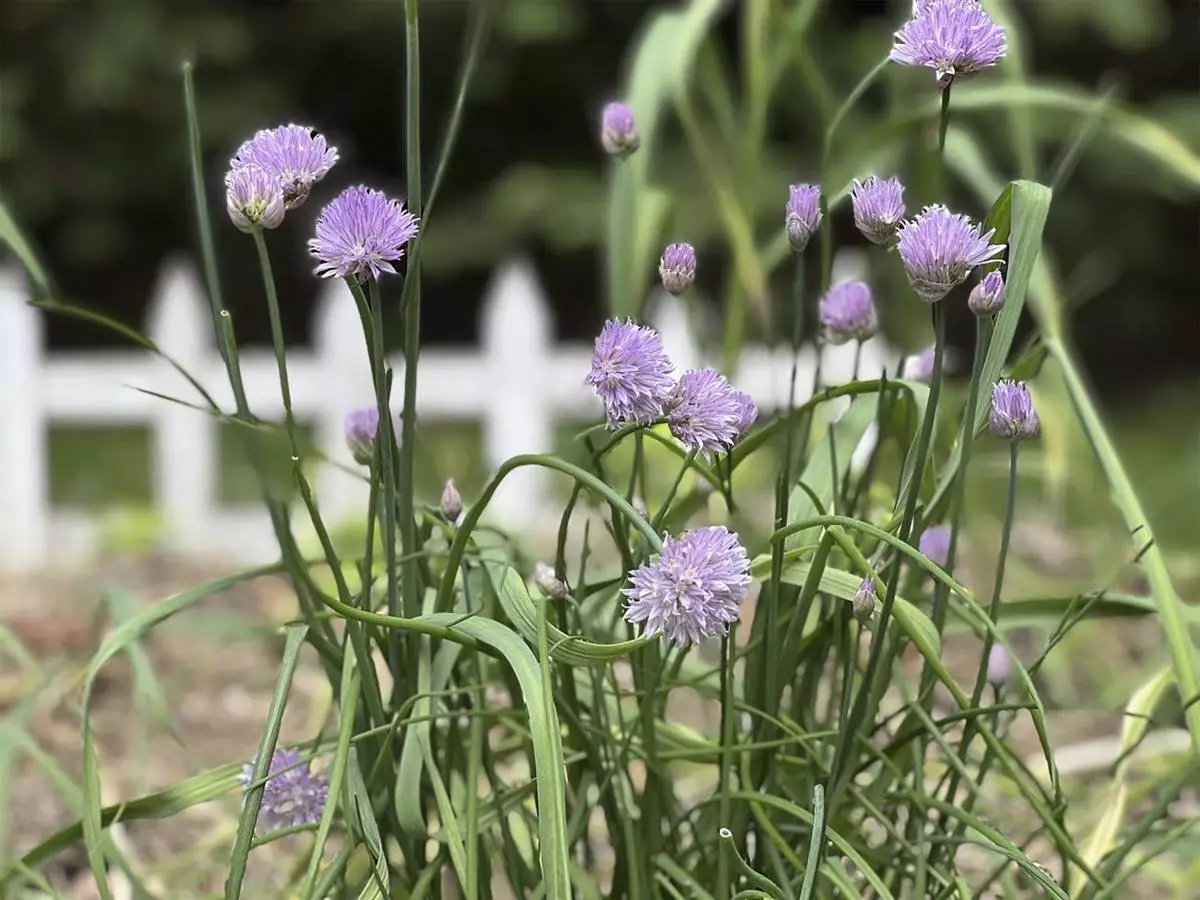
This May 24, 2022 image provided by Jessica Damiano shows chives blooming in Glen Head, New York. Chives are among many edibles that can be used in "foodscaping," a gardening style that includes ornamental and edible plants growing side-by-side. (Jessica Damiano via AP)




